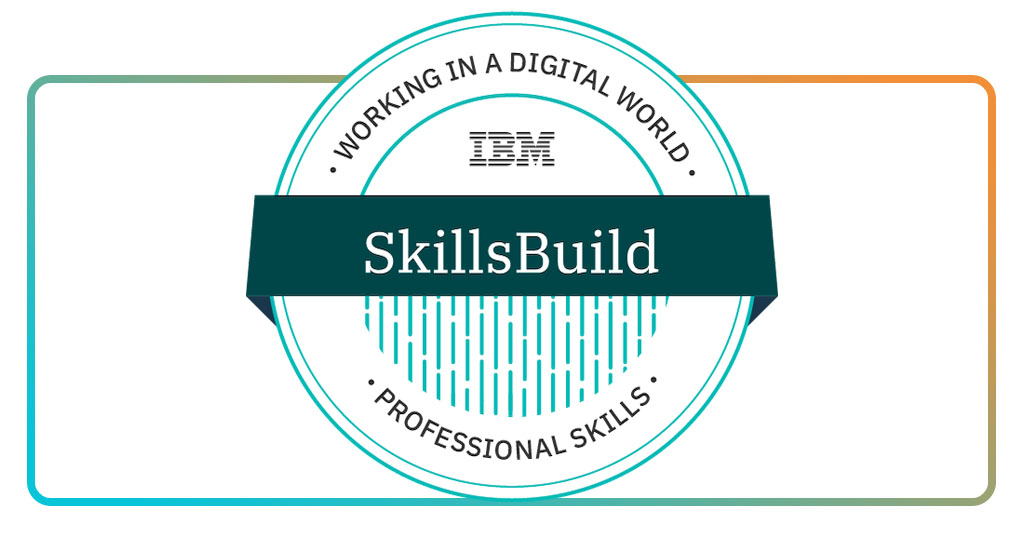The tech industry’s rapid evolution leaves many aspiring professionals wondering how to bridge the skills gap without expensive degrees. Enter IBM SkillsBuild, a game-changing platform offering free tech education to learners worldwide. This initiative democratizes access to crucial digital skills, from cloud computing to artificial intelligence, removing traditional barriers to entry in the tech sector.
What sets IBM SkillsBuild apart is its industry-aligned curriculum designed with real workplace needs in mind. Unlike generic online courses, the platform provides targeted learning paths, recognized certifications, and direct career support. If you’re a complete beginner or looking to upskill, this program could be your ticket to a thriving tech career.
- Ermächtigung zur Bildung: ClassDojo App entfesselt
- 4 AR Education Apps zur Verbesserung der Lernerfahrung
- Explore, Learn & Grow with Discovery Education
What is IBM SkillsBuild and who it helps
IBM SkillsBuild represents a bold approach to tech education, offering completely free courses and credentials in high-demand fields. The platform primarily serves three groups:
Career changers looking to pivot into tech without accumulating student debt find particularly valuable pathways in IBM SkillsBuild.
The platform’s “role-based” learning approach allows mid-career professionals to focus precisely on the skills needed for specific positions like cloud practitioner or junior developer.
Many courses intentionally build on transferable skills from other industries, helping those without traditional tech backgrounds make convincing transitions.
Recent graduates often discover that their academic programs emphasize theory over practical application. IBM SkillsBuild bridges this gap by providing hands-on experience with actual IBM tools and technologies.
A computer science graduate might supplement their degree with specialized training in Watson AI or Red Hat OpenShift, making them significantly more competitive in the job market.
Underrepresented groups in technology benefit from IBM’s targeted initiatives like “SkillsBuild for Women” and “SkillsBuild for Veterans”.
These tailored programs address specific barriers through additional mentorship opportunities, community support networks, and partnerships with diversity-focused employers.
The platform’s accessibility features, including screen reader compatibility and self-paced learning, also make it particularly valuable for learners with disabilities.
Developed through collaborations with educational institutions like community colleges and nonprofits such as Year Up, the curriculum goes far beyond theoretical knowledge.
Learners work on authentic projects using the same IBM Cloud services and developer tools employed by enterprise clients worldwide.
As highlighted on their official portal, the content undergoes continuous updates to reflect emerging technologies and changing employer needs—a critical advantage in the fast-evolving tech landscape.
The platform’s modular design serves diverse learning needs:
- Foundational courses for absolute beginners to start with digital literacy basics;
- Intermediate tracks build competency in specific technologies through project-based learning;
- Advanced specializations prepare learners for industry certifications in areas like AI engineering.
IBM SkillsBuild recognizes that breaking into tech requires more than just technical skills.
The program integrates essential workplace competencies like agile methodologies, design thinking, and professional communication—the “power skills” that help technical talent thrive in real work environments.
This approach explains why over 70% of completers report career advancements within six months, according to IBM’s internal impact studies.
For organizations serving these populations—from workforce development boards to community colleges—IBM SkillsBuild offers a turnkey solution for reskilling initiatives.
The platform provides administrators with progress tracking tools and success metrics, while maintaining the individual learner experience at its core.
When nearly 50% of all jobs require significant digital skills, according to the World Economic Forum, programs like IBM SkillsBuild aren’t just helpful—they’re becoming essential bridges to economic opportunity.
Tech skills you can learn in just weeks
The IBM SkillsBuild catalog covers foundational and advanced tech competencies through structured learning journeys:
- Cloud computing: Master IBM Cloud fundamentals and deployment strategies;
- Cybersecurity: Learn threat detection and data protection techniques;
- AI and data science: Build skills in machine learning and data analysis;
- Programming: Develop proficiency in Python, JavaScript, and other key languages.
Each course follows a modular design, allowing learners to complete certifications in as little as 3-6 weeks with 10-15 hours of weekly study.
The platform’s project-based approach means you’ll finish with portfolio-worthy work samples, a crucial advantage when job hunting.
Certifications and career support included
What makes IBM SkillsBuild truly valuable are the tangible career assets it provides:
Industry-recognized credentials
Every completed course on IBM SkillsBuild earns you verifiable digital badges stored on the Credly platform. These aren’t just participation certificates—they’re:
- Skill-specific: each badge details exactly what competencies you’ve demonstrated;
- Shareable: easily display them on LinkedIn profiles and digital resumes;
- Employer-trusted: backed by IBM’s reputation in the tech industry.
The platform offers over 100 distinct badges across specializations like AI fundamentals, cloud architecture, and cybersecurity essentials.
As highlighted in IBM’s impact report, badge earners see significantly higher interview callback rates compared to traditional resumes.

Personalized professional development
Beyond technical training, IBM SkillsBuild provides:
- 1:1 mentoring sessions with IBM employees and partner organizations;
- Career coaching to help identify suitable tech roles based on your skills;
- Mock technical interviews with feedback from hiring managers;
- Resume optimization using AI tools that analyze applicant tracking systems.
A participant from Ireland’s FIT programme reported landing a cloud support role after mentors helped reframe non-technical retail experience as transferable customer service skills in IT contexts.
Direct hiring pipelines
The platform’s most powerful differentiator is its employment bridge:
- Exclusive job board with opportunities from IBM and partner companies;
- Skills-based matching that connects your badges to suitable openings;
- Recruitment events where graduates pitch directly to hiring teams.
Die AI Career Internship program demonstrates this perfectly—top SkillsBuild completers get fast-tracked into paid apprenticeships.
As the Medium feature emphasizes, this end-to-end support addresses the “last mile” problem in tech education—many can learn skills, but few know how to effectively market them.
IBM’s career services ensure your new competencies translate to real job opportunities.
For those transitioning from other fields, the platform even provides templates for explaining career changes, helping overcome the “experience paradox” many face when entering tech.
How to get started on IBM SkillsBuild today
Beginning your IBM SkillsBuild journey takes just minutes:
- Besuchen Sie die registration page and create your free account;
- Complete the skills assessment to identify your ideal learning path;
- Select from role-based tracks like “AI Foundations” or “Cloud Developer”;
- Enroll in your first course and access supporting career resources.
For those interested in specialized fields like prompt engineering, consider complementing your studies with our guide to essential AI courses.
The platform’s mobile accessibility lets you learn anywhere, making skill-building possible even with a busy schedule.
Final thoughts
With its no-cost model and industry-backed credentials, IBM SkillsBuild represents one of the most accessible pathways into tech today.
As technology continues transforming every sector, these in-demand skills could open doors to stable, rewarding careers—without the burden of student debt.





